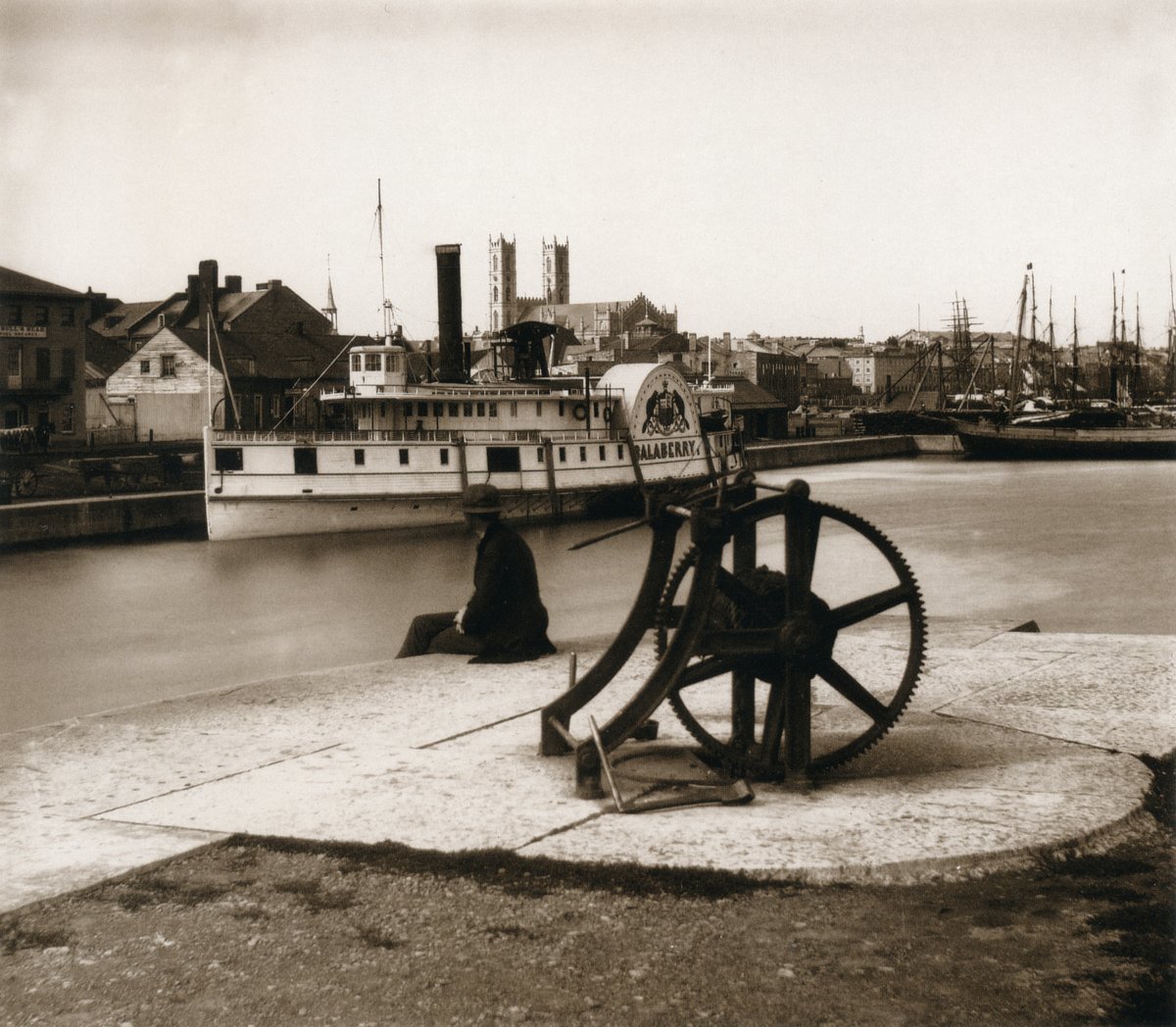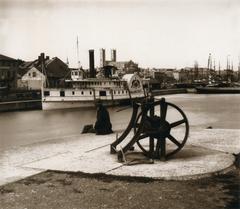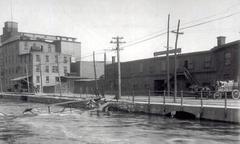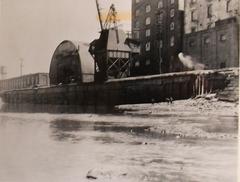
Lachine Canal Montreal: Visiting Hours, Tickets, and Historical Sites Guide
Date: 14/06/2025
Introduction
The Lachine Canal, nestled in the heart of Montreal, stands as both a monument to the city’s industrial heritage and a lively urban oasis. Opened in 1825 to bypass the dangerous Lachine Rapids, the canal played a crucial role in transforming Montreal into a major commercial gateway, linking the Atlantic Ocean to the North American interior (Parks Canada). Today, after extensive revitalization, the canal is celebrated for its blend of history, outdoor recreation, and environmental stewardship, attracting visitors year-round with its scenic pathways, boating opportunities, and vibrant community events (LCMM; CityNews Montreal).
This comprehensive guide covers everything you need to know about planning a visit to the Lachine Canal: historical context, practical visitor information, attractions and activities, environmental initiatives, and travel tips to enhance your experience.
Table of Contents
- Introduction
- Historical Overview
- Visiting the Lachine Canal: Practical Information
- Attractions and Activities Along the Canal
- Environmental Legacy and Challenges
- Sustainable Recreation and Conservation
- Community Engagement and Education
- Ongoing Challenges and Future Directions
- Visitor Guidelines
- Frequently Asked Questions (FAQ)
- Visual and Interactive Resources
- Conclusion
- References
Historical Overview
Origins and Construction (17th–19th Centuries)
Ideas for a canal to bypass the treacherous Lachine Rapids emerged as early as 1671, with several attempts in the 17th and 18th centuries (Parks Canada). Construction finally began in 1821, led by Chief Engineer Thomas Burnett and John Richardson, and the canal was inaugurated in 1825. Spanning roughly 14 kilometers from the Old Port of Montreal to Lake Saint-Louis, the canal’s original seven locks enabled vessels to bypass the rapids and opened up Montreal as a key trade hub (CSCE).
Industrial Expansion and Urban Growth
With its hydraulic power and strategic location, the canal quickly became the nucleus of Canada’s industrialization, lined with factories, mills, and working-class neighborhoods (Parks Canada). Major enlargements in 1848 and again in the late 19th century allowed larger ships to pass and further increased its economic influence. By the early 1900s, the canal corridor was the most diverse and concentrated industrial zone in the country (CSCE).
Decline, Heritage Recognition, and Revitalization
The opening of the St. Lawrence Seaway in 1959 led to a steep decline in commercial use. The canal was officially closed to navigation in 1970, but its importance was recognized when it became a National Historic Site in 1929 (Parks Canada). Parks Canada took over stewardship in 1978, launching major restoration projects that culminated in the reopening of the canal for recreational use in 2002 (LCMM).
The Canal Today
Now a vibrant urban green corridor, the Lachine Canal is lined with parks, restored industrial relics, multi-use paths, and hosts special events such as the 2025 bicentennial celebrations (Parks Canada). It serves as a living reminder of Montreal’s transformation and resilience.
Visiting the Lachine Canal: Practical Information
Visiting Hours
- Parks and Pathways: Open daily from dawn to 11:00 PM, year-round.
- Boating Season: Mid-May to mid-October (check Parks Canada for updates).
- Museums: The Fur Trade at Lachine National Historic Site is open Mon–Sun, 10:00 AM–5:00 PM in summer.
Tickets and Access
- General Access: Free for parks, paths, and outdoor spaces.
- Guided Tours, Museums, Special Events: May require tickets or reservations—book online or at the visitor center (Parks Canada).
Getting There & Accessibility
- Public Transit: Metro Line 1 (Lionel-Groulx, Charlevoix for eastern canal; Angrignon plus bus #195-O/#110-O for the west).
- Cycling: BIXI bike-sharing stations and dedicated bike paths connect all major access points (A Taste for Travel).
- Parking: Limited lots near Atwater Market, Parc René-Lévesque, and visitor centers.
- Accessibility: Paved, wheelchair-accessible paths, ramps, and adapted restrooms at main sites.
Nearby Attractions
- Atwater Market: Fresh produce and local specialties.
- Old Port of Montreal: Museums, shops, and restaurants.
- Griffintown: Trendy district with galleries and eateries.
Attractions and Activities Along the Lachine Canal
Parks, Pathways, and Green Spaces
- Parc René-Lévesque: Expansive lawns, sculpture garden, river views.
- Linear Parks: Interconnected green spaces perfect for picnics and relaxation (TourbyTransit).
Multi-Use Pathway
- Cycling, Walking, Running: Over 11 km of scenic, mostly flat trail from Old Port to Lachine.
- Bike & Equipment Rentals: BIXI and local shops offer bikes, scooters, and rollerblades.
Boating, Kayaking, Paddleboarding
- Navigation: Five operational locks, open mid-May to mid-October.
- Rentals: Kayaks, canoes, paddleboards available at canal-side shops.
- Special Events: Lock & Paddle mass flotilla for the bicentennial (Parks Canada).
Guided Tours and Museums
- Fur Trade at Lachine National Historic Site: 1803 stone warehouse museum, open summer days (TourbyTransit).
- Industrial Landmarks: Farine Five Roses sign, Canada Malting silos.
Festivals and Cultural Events
- Festival sur le Canal: Largest cultural festival in Sud-Ouest, June 13–15, 2025 (Festival sur le Canal).
- Cycling Tuesdays, Lachine Musical Festival: Regular seasonal events (Montreal.ca).
Seasonal Activities
- Spring/Summer: Boating, cycling, festivals, picnics.
- Fall: Foliage walks and cycling.
- Winter: Cross-country skiing and snowshoeing (TourbyTransit).
Environmental Legacy and Challenges
Industrial Impact and Remediation
Decades of industrial use resulted in significant water pollution. Restoration efforts included dredging, bank stabilization, and habitat restoration to improve water quality and restore biodiversity (CityNews Montreal; Parks Canada).
Revitalization and Urban Biodiversity
The canal now serves as an urban ecological corridor, supporting migratory birds and pollinators. Linear parks and pollinator gardens have been established along its banks (MTL.org).
Ongoing Challenges
Legacy pollutants remain in some sediments, and swimming is not permitted. Gentrification and development pressures also pose challenges to community diversity and heritage (Wikipedia; CityNews Montreal).
Sustainable Recreation and Conservation
- Active Transportation: Bike and pedestrian paths reduce vehicle traffic and emissions (TripSavvy).
- Non-Motorized Watercraft: Kayaks, canoes, and pedal boats are encouraged over motorboats.
- Waste Reduction: Enhanced recycling and waste facilities along the canal.
Community Engagement and Education
- Interpretive Programs: Guided walks, exhibitions, and educational activities (Parks Canada).
- Citizen Science: Community projects monitor water quality and wildlife.
- Annual Events: “Lock & Paddle” and others promote stewardship (Parks Canada).
Visitor Guidelines
- Stay on marked paths.
- Use public transit, bikes, or walk when possible.
- Dispose of waste responsibly.
- Leashed pets welcome; owners must clean up.
- Fishing only in permitted areas; swimming is not allowed.
Frequently Asked Questions (FAQ)
Q: What are the Lachine Canal visiting hours?
A: Parks and paths are open daily from dawn to 11:00 PM; boating season runs from mid-May to mid-October. Museums have seasonal hours.
Q: Is there an entrance fee?
A: Access is free for outdoor spaces. Some museums, tours, and boat lockage require tickets.
Q: Is the canal accessible for people with disabilities?
A: Yes, many paths and facilities are wheelchair accessible.
Q: How do I reach the canal by public transit?
A: Use Metro Line 1 to Charlevoix (east) or Angrignon plus bus #195-O/#110-O (west).
Q: Can I rent bikes or watercraft?
A: Yes, BIXI and local shops offer rentals for bikes, kayaks, canoes, and paddleboards.
Q: Are pets allowed?
A: Yes, with a leash; owners must clean up after them.
Q: Can I swim in the canal?
A: No, due to water quality concerns.
Visual and Interactive Resources
- Explore virtual tours and galleries on the Parks Canada website.
- Use interactive maps highlighting key parks, rental stations, and heritage sites.
- For the best photo opportunities, visit Parc René-Lévesque, the locks, and industrial landmarks at sunrise or sunset.
Conclusion
The Lachine Canal is a testament to Montreal’s resilience and dynamism, offering a multifaceted experience that fuses history, urban nature, and cultural energy. Visitors can stroll or cycle along scenic paths, explore historic sites, participate in vibrant festivals, and appreciate ongoing environmental renewal. For the most up-to-date visiting hours, ticketing, and events, consult official resources and consider downloading the Audiala app.
Whether you’re a local or a visitor, the Lachine Canal is an essential Montreal experience—one that honors the city’s past while embracing a sustainable, inclusive future.
References
- Lachine Canal National Historic Site, Parks Canada
- The Lachine Canal: Montreal’s Answer to the Rapids, LCMM
- Special Urban Planning Program: Lachine-Est Eco-Neighbourhood, Montreal.ca
- Montreal Lachine Canal Turns 200, CityNews Montreal
- Things to Do in Montreal Summer, A Taste for Travel
- Lachine Canal National Historic Site Activities, Parks Canada
- From Industrial Highway to Developer’s Paradise, Northeast Now
- 7 Things You Should Know Before Traveling to Montreal, Travel Notes and Things
- Lachine Canal Attractions, TripSavvy
- Lachine Canal National Historic Site – Tour by Transit






























































































































